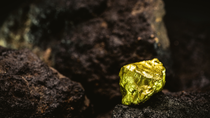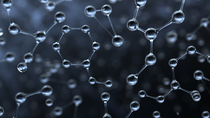Who we are
Arnd Garsuch
Water is his element. Arnd Garsuch is a passionate rower, swimmer - and electrochemist. At first glance, water and electricity don't get along very well. When water conducts electricity, it can be life-threatening in everyday life. But researchers like Arnd can use the power of electric current to trigger chemical reactions in a targeted way and use it to develop surprising solutions for electromobility and climate protection. Arnd is investigating electrolysis processes that can be used, among other things, to recycle batteries or filter CO2 emissions from our oceans.
What are you working on at BASF?
In the lab at BASF, I do research on the very things that interest me most – in the past the production of lithium-ion batteries, and today their recycling. I am a big fan of renewable energies because the principle of sustainability is convincing. Generating energy from sources that do not cause CO2 emissions is simply the best solution for me in view of climate change. At home we have solar panels on the roof and a battery storage in the basement. For three months, we have been driving an electric car – there is enough solar energy!
What is the challenge in recycling lithium-ion batteries?
Together with my team, I am doing research to optimize the recycling process of lithium-ion batteries. The starting material is black matter, which is what remains of old lithium-ion batteries after cables, packaging or housing parts made of plastics and metals have been removed, everything has been shredded and the resulting residue has been pyrolyzed, a process that breaks it down at high temperatures.
Arnd Garsuch with the membrane that's decisive for the recycling of lithium-ion batteries.
Together with his colleagues, Arnd researches on optimizing the electrolysis process to recycle lithium.
When this black mass is processed, a liquid containing lithium is produced. Now it gets really interesting for us: How can we recover lithium from this aqueous waste stream? The solution: an electrolysis cell with a membrane as thin as a shopping bag, which works much like a coffee filter. Only the lithium ions migrate from one side through the membrane to the other. There, the lithium ions and hydroxide form high-purity lithium hydroxide, the new raw material needed for battery production.
The biggest challenge is to develop an ideal membrane that is long-lasting and allows the lithium ions to pass through with as little energy input as possible. We have identified a suitable membrane that will be tested next year in a pilot plant at our battery recycling facility in Schwarzheide – 100 times larger than our lab.
The electrolysis processes that Arnd Garsuch and his team are working on are not only used to recycle batteries. Among other things, he is also working on the further development of water electrolysis and thus the production of hydrogen with low emissions. Also in the oceans, electrolysis could help solve a huge problem.
In the lab you are also working on other possible applications for the electrolysis process. Can you tell us about the idea of filtering CO2 from seawater?
As the amount of CO2 in the atmosphere increases, more of it dissolves in seawater and our oceans become more and more acidic. To curb climate change, we must first and foremost reduce CO2 emissions, no doubt about that. But that will not be enough in the long term. We need additional technologies with which we can filter CO2 from the air or the sea – and in this way make a negative CO2 balance possible.
How can that be done?
One possibility we are now exploring together with the University of Antwerp is the electrolysis of seawater. In this process, the seawater is passed through an electrochemical cell and the pH value is changed. One part of the seawater becomes more acidic during the electrochemical reaction, and we can release the CO2 dissolved in the seawater and capture it in a subsequent step.
Close-up of the graphite-flowfield of a fuel cell that converts chemical energy into electrical energy.
The other part of the seawater becomes more basic during electrolysis. Both parts are mixed again after the release of the CO2 and the neutral water is returned to the sea.
In this way, seawater, as the largest CO2 absorber in the world, becomes more absorbent again and can remove more CO2 from the atmosphere. We are also doing research on ways to utilize the captured CO2 and use it in chemical reactions. The CO2 obtained in this way can, for example, be converted into basic chemicals such as carbon monoxide, methanol, or the salts of formic acid.
Why did you become a scientist?
I've always had an affinity for science, and I like to take on challenges and difficult tasks that I can chew on for a really long time. With climate change, the avoidance of CO2 emissions or the expansion of renewables, there are enough of those. In research I can solve problems and make at least a small contribution to solving these big challenges – that's what motivates me.
What do you wish for the future?
As a father of three, I hope that we will enable future generations to enjoy the same high standard of living that we have. I am convinced that education and knowledge open up new ways for us to deal with change. Therefore, I wish that everyone has the opportunity and the courage to acquire knowledge. If we know what the consequences of our actions are, it is also easier for us to make the best decision for the climate and therefore also for us and our descendants – without the feeling of abstinence.
Is there anything you deliberately abstain from?
The last time I flew was five years ago and so far, I haven't had any withdrawal symptoms. I have also reduced my meat consumption and enjoy the various bowls in the BASF canteens more and more often.
Join the team.
- Become a smart scientist yourself? The world needs innovation. We need you.Explore open positions.



